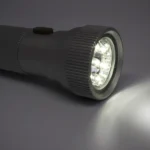
If you’re curious about the innovative technology that has been revolutionizing kitchens around the world, you’re in the right place. Induction cookers offer a unique cooking experience, combining efficiency, safety, and precision. In this post, we’ll explore a variety of fascinating facts about induction cookers, from how they work to their benefits and even some tips for choosing the right one for your home. Whether you’re a cooking enthusiast or just looking to upgrade your kitchen appliances, these insights will provide you with a deeper understanding of this modern cooking method. Let’s dive in!
Working Principle: Induction cookers operate based on the principle of electromagnetic induction. When an induction cooktop is turned on, an alternating current flows through a coil beneath the cooktop surface, creating a magnetic field. This magnetic field induces an electric current in the cookware placed on the cooktop, which produces heat directly within the pot or pan itself. This direct heating method allows for rapid cooking and significantly reduces heat loss compared to traditional cooking methods.
Efficiency: Induction cookers are known for their high energy efficiency, operating at approximately 90%. This means that 90% of the energy consumed goes directly into cooking food, with only 10% lost as heat. In contrast, gas stoves are about 40% efficient, meaning that a significant portion of the energy is wasted as heat in the surrounding air. This efficiency not only helps in reducing energy bills but also makes cooking faster and more effective.
Speed: One of the standout features of induction cookers is their speed. They can bring a pot of water to a boil in a fraction of the time it takes traditional gas or electric stoves. For example, induction cookers can boil water in about 3 to 4 minutes, depending on the quantity, while gas stoves may take significantly longer. This rapid heating capability is particularly advantageous for busy kitchens and time-sensitive cooking tasks.
Control: Induction cookers provide exceptional control over cooking temperatures. Unlike gas stoves, which may take time to adjust to temperature changes, induction cookers respond almost instantaneously to adjustments in power settings. This allows users to achieve precise cooking results, whether simmering sauces or searing meats, making it easier to replicate recipes and maintain desired cooking conditions.
Safety: Safety is a major advantage of induction cooking. The cooktop itself remains cool to the touch during cooking, as heat is generated only in the cookware. This significantly reduces the risk of burns, making it safer for households with children or pets. Additionally, most induction cookers feature automatic shut-off functions that activate when cookware is removed or if the cooktop is left unattended for an extended period.
Energy Source: Induction cookers require a power supply of either 120V or 240V, depending on the specific model and its intended use. The higher voltage models are often more powerful and can heat cookware more quickly. Users should ensure that their kitchen is equipped with the appropriate electrical infrastructure to support the induction cooktop, as this can influence installation and functionality.
Cookware Requirement: Induction cooking necessitates the use of ferrous (magnetic) cookware, which includes materials such as cast iron and certain types of stainless steel. Cookware made from aluminum, copper, or glass will not work unless they have a magnetic base. This requirement is due to the way induction cookers generate heat through magnetic fields. Users can easily test their existing cookware with a magnet to determine compatibility.
Weight: Induction cooktops are generally lighter than traditional electric cooktops, making them easier to handle and install. The lightweight design is advantageous for both portable induction cookers, which can be moved and stored easily, and built-in models that require less structural support. This portability allows users to utilize induction cooking in various settings, including camping and small kitchens.
Size: Induction cookers are available in a wide range of sizes, catering to different cooking needs and kitchen layouts. Portable single burners are perfect for small spaces or additional cooking capacity, while larger built-in units can accommodate multiple pots and pans simultaneously. This versatility allows users to choose the right size induction cooker based on their cooking habits and available kitchen space.
Noise Level: Some users may notice a humming or buzzing sound when using induction cookers, especially at higher power settings. This noise is caused by the vibration of the cookware due to the magnetic field. While most people find the sound to be minimal and not disruptive, it can vary based on the type of cookware used. Higher-quality pans may produce less noise than lighter, less robust options.
Cleaning: The design of induction cookers features a smooth, flat surface that makes them easy to clean. Since the cooktop itself does not get hot, spills and splatters do not burn onto the surface, which simplifies cleanup. Users can easily wipe the cooktop with a damp cloth or sponge after cooking, and any food residue can be removed without the need for harsh scrubbing. This ease of maintenance is a significant advantage for busy kitchens, as it saves time and effort in post-cooking cleanup.
Heat Distribution: Induction cookers provide superior heat distribution compared to traditional cooking methods. The heat generated is concentrated directly in the cookware, allowing for even cooking across the entire surface of the pot or pan. This reduces the likelihood of hot spots, which can lead to uneven cooking or burning of food. As a result, dishes can be prepared with greater consistency, making it easier to achieve desired cooking results.
Temperature Range: Many induction cookers offer a wide range of temperature settings, allowing users to select the perfect heat level for various cooking techniques. From high temperatures for boiling and frying to low settings for simmering and warming, induction cookers can accommodate diverse culinary needs. This versatility helps home cooks and professional chefs alike to experiment with different recipes and cooking styles while maintaining precise control over their cooking environment.
Timer Function: Most induction cookers come equipped with built-in timers that allow users to set specific cooking durations. This feature is particularly useful for recipes that require precise timing, such as baking or simmering. Once the timer reaches zero, the induction cooker automatically shuts off or alerts the user, preventing overcooking or burning. This added convenience enhances the cooking experience and helps ensure that dishes are prepared to perfection.
Power Boost Feature: Many induction cookers include a power boost feature that temporarily increases the cooking power for rapid heating. This function is especially beneficial for tasks like boiling water or searing meat, where quick heat is essential. The power boost can provide up to 30% more power for a limited time, allowing users to achieve fast results without compromising efficiency. Once the desired temperature is reached, the cooker automatically returns to the regular power setting.
Child Safety: Induction cookers are designed with safety features that make them suitable for families with children. Many models include child safety locks that prevent accidental activation, ensuring that the cooktop cannot be turned on without intentional action. Additionally, the cool-to-the-touch surface reduces the risk of burns, providing peace of mind for parents. These safety features contribute to a safer kitchen environment, allowing families to cook together more confidently.
Environmental Impact: Induction cooking can have a more positive environmental impact compared to traditional cooking methods. Due to their high efficiency (approximately 90%), induction cookers consume less energy, which can lead to reduced overall energy use in the home. This efficiency not only helps lower utility bills but also contributes to a smaller carbon footprint. For environmentally conscious consumers, choosing induction cooking can be a step towards more sustainable living.
Installation: Induction cookers can be installed in various configurations, including standalone units or integrated into kitchen countertops. Built-in induction cooktops offer a sleek and modern appearance, seamlessly blending into the kitchen design. Portable induction burners provide flexibility, allowing users to cook in different locations, such as outdoor spaces or small apartments. Installation may require professional assistance, especially for built-in models that need proper electrical connections.
Cost: The initial cost of induction cookers is generally higher than that of traditional gas or electric stoves. Prices can vary widely based on features, brand, and size, with some high-end models reaching several hundred dollars. However, the long-term savings on energy bills, along with the reduced cooking times and ease of cleaning, can offset the initial investment. Consumers should weigh these factors when considering whether to switch to induction cooking.
Popularity: Induction cooking is gaining popularity in both home kitchens and professional settings. Many chefs appreciate the efficiency and precise temperature control that induction cookers provide, making them ideal for high-paced culinary environments. Additionally, the growing awareness of energy efficiency and safety features has led more consumers to choose induction cookers as a modern alternative to traditional cooking methods. This trend is expected to continue as technology advances and more options become available on the market.
Heat Loss: Induction cooking minimizes heat loss significantly compared to gas and traditional electric stoves. In gas cooking, a substantial amount of heat is lost to the surrounding air, as the flames heat not only the cookware but also the area around it. In contrast, induction cookers direct nearly all the energy into the pot or pan, resulting in minimal heat escaping into the kitchen. This efficiency not only helps maintain a cooler cooking environment but also contributes to faster cooking times and reduced energy consumption.
Cooking Styles: Induction cookers are versatile and suitable for a wide variety of cooking styles. They can be used for boiling, frying, simmering, sautéing, and even delicate tasks such as melting chocolate or making sauces. The precise temperature control allows cooks to adjust heat levels quickly, making it easier to achieve specific culinary techniques. Additionally, the rapid response time of induction cookers enables users to experiment with different cooking methods without the risk of burning or overcooking.
Power Consumption: Induction cookers typically consume less power than traditional electric stoves. Their high efficiency means that they use less electricity to achieve the same cooking results, translating to lower energy bills for consumers. For example, while a conventional electric stove might draw a significant amount of power during operation, an induction cooker can deliver similar performance while consuming less energy. This makes induction cooking a more economical choice for those looking to reduce their overall power consumption.
Compatibility: Many modern induction cookers are designed with automatic pan detection technology. This feature allows the cooktop to recognize when compatible cookware is placed on it, activating the heating element only when appropriate pots or pans are detected. If there is no cookware or the cookware is not suitable for induction cooking, the cooktop will not heat up. This safety feature not only prevents accidents but also enhances energy efficiency by ensuring that energy is used only when needed.
Warranty: Induction cookers often come with warranties that range from 1 to 5 years, depending on the manufacturer and model. These warranties typically cover defects in materials and workmanship, providing consumers with peace of mind regarding their investment. A longer warranty can indicate a manufacturer’s confidence in the durability and reliability of their product. Consumers are encouraged to review warranty terms carefully, as they can vary significantly between brands and models, and may also offer additional coverage options for parts and labor.
FAQs about Induction Cookers
Induction cooking has become increasingly popular due to its speed, efficiency, and precise temperature control. However, many people have questions about how it works, its benefits, and its limitations. Here are some frequently asked questions about induction cookers:
1. How does an induction cooker work?
Unlike traditional electric or gas cooktops, induction cooking doesn’t use flames or heating elements to directly heat the pan. Instead, it uses electromagnetism. Here’s the process:
- Coil: An induction coil lies beneath the cooktop’s glass surface.
- Current: When the cooktop is turned on, an alternating current flows through the coil.
- Magnetic Field: This creates a magnetic field that extends upward to the pan’s base.
- Eddy Currents: If the pan’s base is made of a ferromagnetic material (like cast iron or stainless steel with a magnetic base), the magnetic field induces eddy currents (circular electric currents) within the pan’s base.
- Heat Generation: These eddy currents encounter resistance within the pan’s metal, generating heat within the pan itself. This heat then cooks the food.
- Cooktop Remains Cool: Because the heat is generated in the pan and not the cooktop surface, the cooktop itself remains relatively cool to the touch (though it can get warm from the pan’s residual heat).
2. What are the advantages of using an induction cooker?
Induction cooking offers several key advantages:
- Speed: Induction cooking is significantly faster than traditional cooking methods. It can boil water much quicker than gas or electric cooktops.
- Efficiency: Induction is highly energy-efficient. Very little heat is wasted, as the heat is generated directly in the pan.
- Precise Temperature Control: Induction cooktops offer very precise temperature control, allowing for delicate simmering and consistent cooking.
- Safety: Because the cooktop surface doesn’t get extremely hot, there’s a lower risk of burns. There’s also no open flame or gas leak risk.
- Cleanliness: The smooth glass surface of an induction cooktop is easy to clean. Spills don’t burn onto the surface.
- Responsiveness: Induction cooktops respond very quickly to changes in temperature settings, similar to gas cooktops.
3. What are the disadvantages of using an induction cooker?
While induction cooking has many benefits, there are also some potential drawbacks:
- Cookware Compatibility: You need cookware with a magnetic base for induction cooking. Aluminum, copper, and some types of stainless steel cookware won’t work unless they have a magnetic base.
- Cost: Induction cooktops can be more expensive than traditional electric or gas cooktops.
- Power Requirements: Induction cooktops can require a significant amount of power, so you may need to ensure your electrical system is adequate.
- Noise: Some induction cooktops can produce a buzzing or humming sound during operation, although this is usually minimal.
- Learning Curve: It may take some time to get used to cooking with induction, as it heats up so quickly and the temperature control is very precise.
4. How can I tell if my cookware is induction compatible?
The easiest way to check if your cookware is induction compatible is to use a magnet. If a magnet sticks to the base of the pan, it will work on an induction cooktop. You can also look for the induction symbol (a coil or the word “induction”) on the cookware’s packaging or base.
5. What types of cookware are best for induction cooking?
Cookware made of the following materials is typically induction compatible:
- Cast Iron: Cast iron cookware works well on induction cooktops and provides excellent heat distribution.
- Stainless Steel: Many stainless steel cookware sets are induction compatible, but be sure to check for a magnetic base.
- Enameled Cast Iron: Enameled cast iron cookware is also induction compatible and comes in a variety of colors.
6. Can I use a wok on an induction cooktop?
Yes, you can use a wok on an induction cooktop, but you’ll need a specially designed induction wok that has a flat bottom to make proper contact with the cooktop surface. Traditional round-bottom woks are not suitable for induction cooking.
7. Is induction cooking safe?
Induction cooking is generally considered safe. The cooktop surface doesn’t get extremely hot, reducing the risk of burns. There’s no open flame or gas leak risk. The electromagnetic fields produced by induction cooktops are also considered safe for most people. However, people with pacemakers or other implanted medical devices should consult their doctor before using an induction cooktop.
8. How do I clean an induction cooktop?
Induction cooktops are easy to clean. Because the surface doesn’t get extremely hot, spills don’t tend to burn onto it. Simply wipe the surface with a damp cloth or sponge after cooking. For tougher stains, you can use a mild cleaner designed for glass cooktops.
9. Are induction cooktops energy efficient?
Induction cooktops are highly energy efficient. They heat the pan directly, so very little heat is wasted. This makes them more efficient than traditional electric or gas cooktops.
10. How much do induction cooktops cost?
Induction cooktops can range in price from a few hundred dollars to over a thousand dollars, depending on the brand, features, and number of burners.
11. Can I use any size pan on an induction cooktop?
Most induction cooktops have specific burner sizes, and it’s best to use pans that are roughly the same size as the burner. Using a pan that is too small may not generate enough heat, while a pan that is too large may not heat evenly.
12. What is the difference between an induction cooktop and a ceramic cooktop?
Both induction and ceramic cooktops have a smooth glass surface. However, they work in different ways. Ceramic cooktops use radiant heating elements to heat the surface, which then heats the pan. Induction cooktops, on the other hand, use electromagnetism to heat the pan directly.
13. Can I use a pressure cooker on an induction cooktop?
Yes, you can use a pressure cooker on an induction cooktop, as long as the pressure cooker has a magnetic base.
14. How long do induction cooktops last?
Induction cooktops are generally durable and can last for many years with proper care.
15. Are there any special installation requirements for induction cooktops?
Induction cooktops typically require a 240-volt electrical connection, similar to an electric oven or range. You may need to have a qualified electrician install a dedicated circuit for your induction cooktop.









